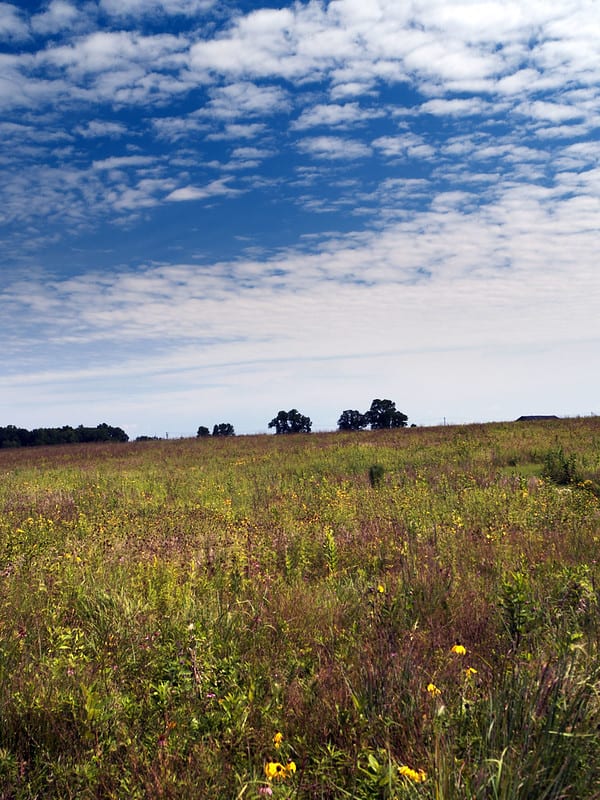Diversity and life-span of plants help prairie ecosystems use water and nutrients efficiently.
All across the world, the best soils for growing grains like wheat and corn are in areas that used to be prairies. Prairie soils are high in the nutrients that plants need, and have a crumbly, spongy texture that soaks up and holds water. These rich topsoils result from between plants and soil microbes such as fungi and bacteria.
When we clear prairies for agriculture, it is usually for annual crops. Annuals are plants which grow, produce seeds, and die all in one year, so their seeds are planted every year. Before replanting, farmers often till the soil. That is, they dig and turn the soil to pull out the roots and stems of old plants. Tilling has caused the rich prairie top soils to erode and wash into water bodies, such as lakes, rivers, and bays. At the same time, soil nutrients lost from farmlands need to be replaced somehow in order for the crops to grow. Many farms solve this problem by using fertilizers every year. Without the prairie’s symbiotic microbes, the soil cannot soak in or hold as much water, so the plants also require farm irrigation. However, without the spongy soil texture, that water runs off the fields and takes even more soil and the fertilizer with it. In this way, the cycle of erosion, fertilization, and irrigation keeps on and on. Meanwhile, the heavy load of soil and nutrients cause major pollution problems in aquatic habitats. These problems are becoming worse with climate change, because hotter, drier climate means that crops need even more irrigation. With that irrigation comes more erosion, water shortages, and increasing hardship for farmers who grow food.
Fortunately, scientists and farmers are finding new ways to grow the food the world needs without these problems. The key to the solution is understanding how prairie habitats work, and how their soils became so rich in the first place.
Unlike our grain crops that are annuals, most prairie plants are perennials. This means that after they have produced seeds, their leaves may turn brown and fall off, but their roots stay alive underground. The following growing season, the healthy roots keep growing larger and deeper as the plants send up new leaves, and produce seeds again. The living roots soak up water, hold down the soil, and prevent erosion. Old leaves and stems get broken down by symbiotic microbes, which help the plants take up the nutrients. In exchange, the plants send sugars down their ever-deepening roots that feed the microbes and help increase their populations.
In this way, perennial plants, with roots that stay alive all year long, build an ecosystem in which water, plentiful microbes, healthy plants, and soil nutrients build a sustainable cycle. Together, they prevent erosion and water pollution, and conserve water. Another major climate benefit of prairies is that perennials sequester, or lock in, carbon. The plants remove carbon dioxide from the atmosphere, and put it into long term storage in the living plant tissue and also buried deep in the soil. This is a major strategy for slowing down climate change and building a healthy agricultural system.
This content marked as “Google Youtube” uses cookies that you chose to keep disabled. Click here to open your preferences and accept cookies..
By studying the diversity of prairies, scientists have learned which types of plants play a role in keeping the system self-sustaining. For example, legumes have symbiotic root fungi that leak nitrogen into the soil. This extra nitrogen gets taken up by neighboring plants. The flowers of some herbs attract pollinators that visit and pollinate many other plants as well. Perennial grasses produce deep roots, whose important role is explained above. If agriculture can mimic this combination of plant types, and develop grain types that are perennial, perhaps we can grow enough food while also restoring the prairie’s ability to use water and nutrients sustainably.







